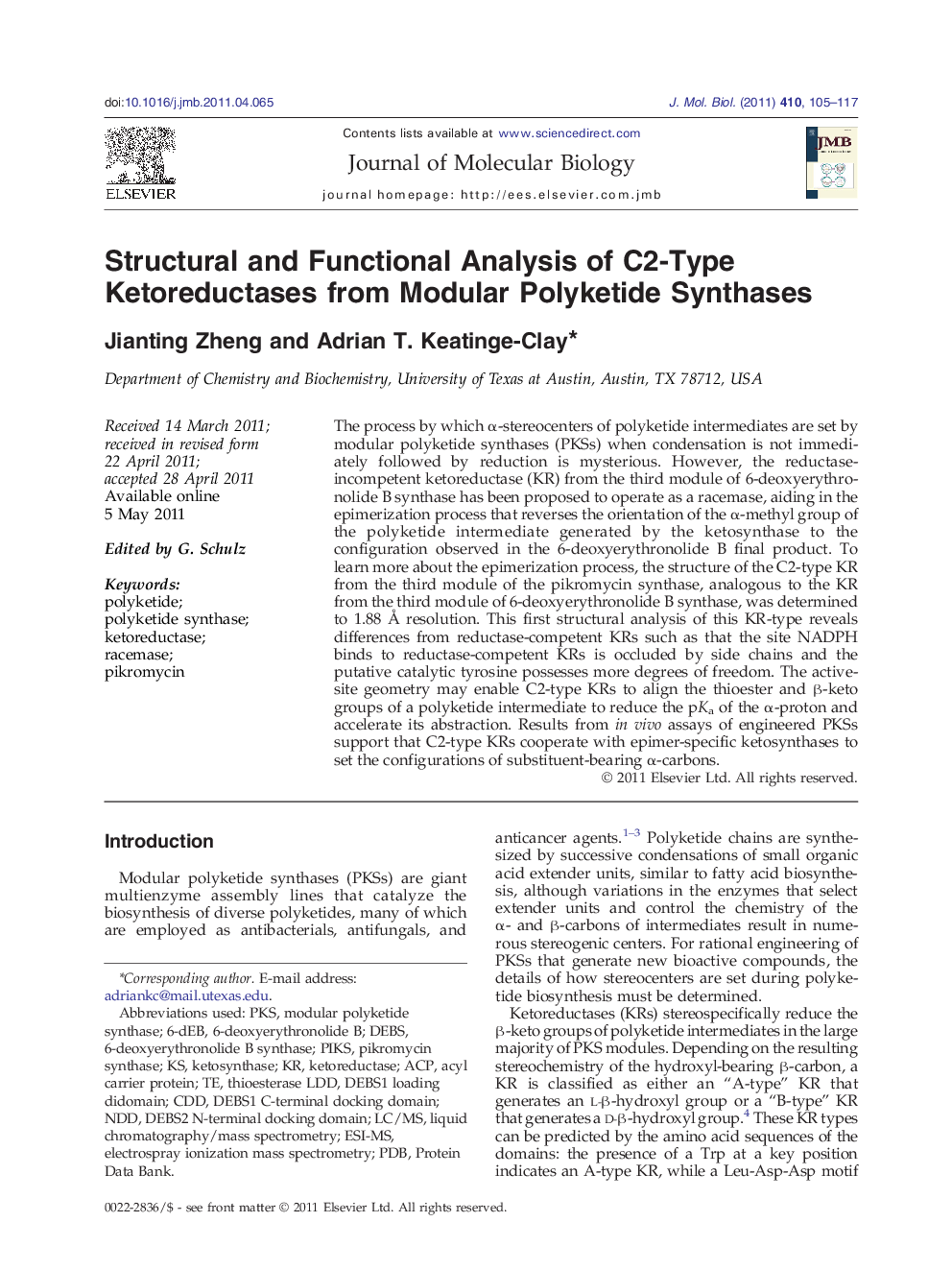| Article ID | Journal | Published Year | Pages | File Type |
|---|---|---|---|---|
| 2185170 | Journal of Molecular Biology | 2011 | 13 Pages |
The process by which α-stereocenters of polyketide intermediates are set by modular polyketide synthases (PKSs) when condensation is not immediately followed by reduction is mysterious. However, the reductase-incompetent ketoreductase (KR) from the third module of 6-deoxyerythronolide B synthase has been proposed to operate as a racemase, aiding in the epimerization process that reverses the orientation of the α-methyl group of the polyketide intermediate generated by the ketosynthase to the configuration observed in the 6-deoxyerythronolide B final product. To learn more about the epimerization process, the structure of the C2-type KR from the third module of the pikromycin synthase, analogous to the KR from the third module of 6-deoxyerythronolide B synthase, was determined to 1.88 Å resolution. This first structural analysis of this KR-type reveals differences from reductase-competent KRs such as that the site NADPH binds to reductase-competent KRs is occluded by side chains and the putative catalytic tyrosine possesses more degrees of freedom. The active-site geometry may enable C2-type KRs to align the thioester and β-keto groups of a polyketide intermediate to reduce the pKa of the α-proton and accelerate its abstraction. Results from in vivo assays of engineered PKSs support that C2-type KRs cooperate with epimer-specific ketosynthases to set the configurations of substituent-bearing α-carbons.
Research Highlights► The first structure of a C2-type KR at 1.88 Å resolution. ► Functional assays of engineered PKSs support C2-type KRs as racemases. ► Racemization mechanism of C2-type KRs is proposed.
